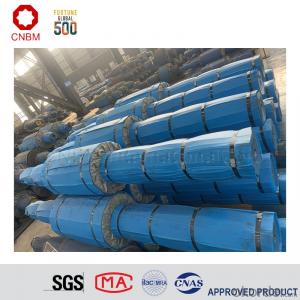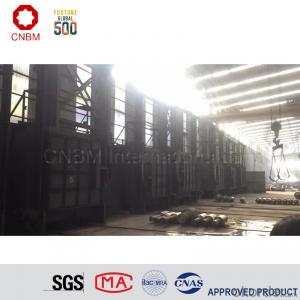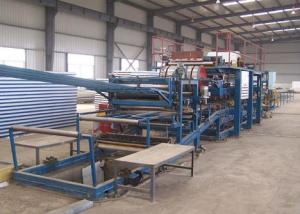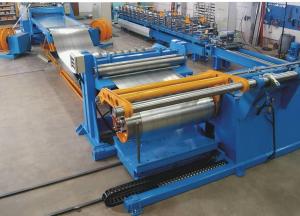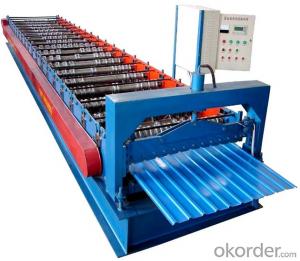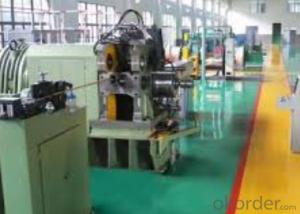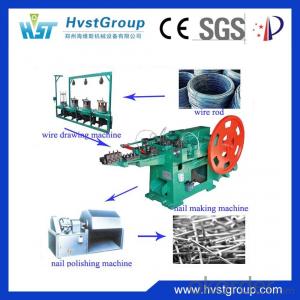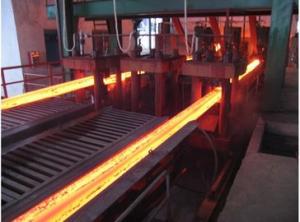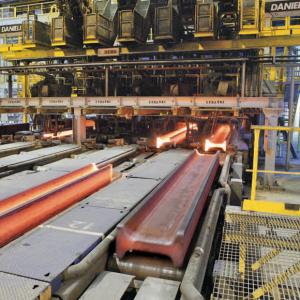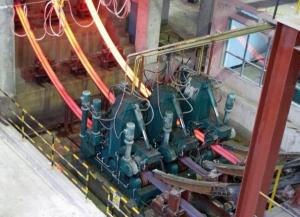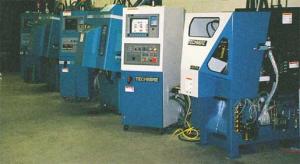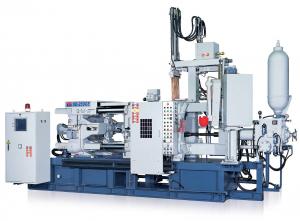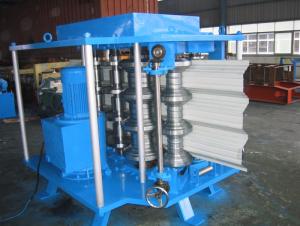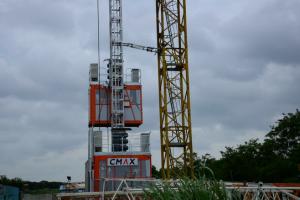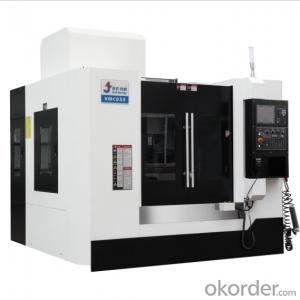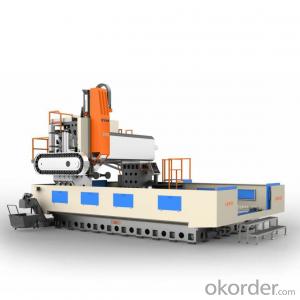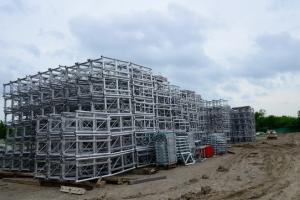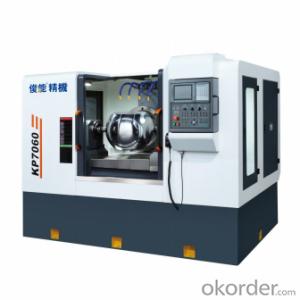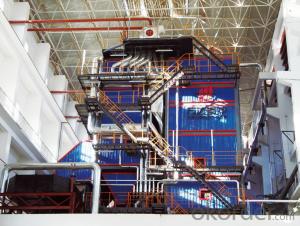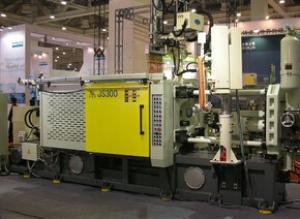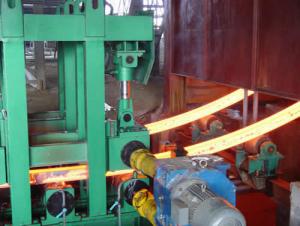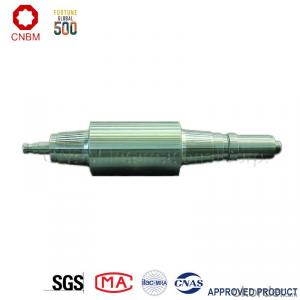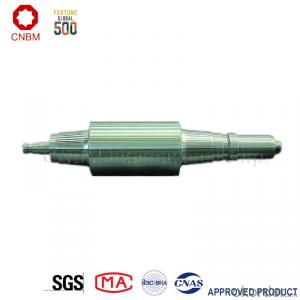Half-Speed Steel Roll With High Quality and Low Price
- Loading Port:
- Tianjin
- Payment Terms:
- TT OR LC
- Min Order Qty:
- 2 m.t.
- Supply Capability:
- 41000 m.t./month
- Option:
- 650X1780X5540; 650X1780X5540; 680X2080X5920
OKorder Service Pledge
OKorder Financial Service
You Might Also Like
Item specifice
Company Profile
CNBM International Corporation (CNBM International) is the most important trading platform of CNBM Group Corporation, a state-owned company under the direct supervision of State-owned Assets Supervision and Administration Commission of the State Council.
CNBM Group is integrated with four business segments: Manufacture, R&D,Sets of equipment and Logistics trading.Mill rolls are our main products.
CNBM International is highly recognized by its business partners and clients all over the world and has established good business relationship with the customers in over 120 countries and regions all over the world.

The product introduction of mill roll
Equipped with advanced technological facilities on melting, casting, forging, heat treating and mechanical machining, our factory has formed 9 professional complete roll manufacturing lines of cast steel, cast iron and forged steel rolls such as strip mill rolls, heavy section mill rolls, wire & bar rolls, special shaped rolls and small-sized cold rolls and specialized production lines of bloom and slab CCM, coke oven equipments and wind power products. Annual production capacity of mill rolls is 500,000 tons, metallurgical equipment is 80,000 tons.

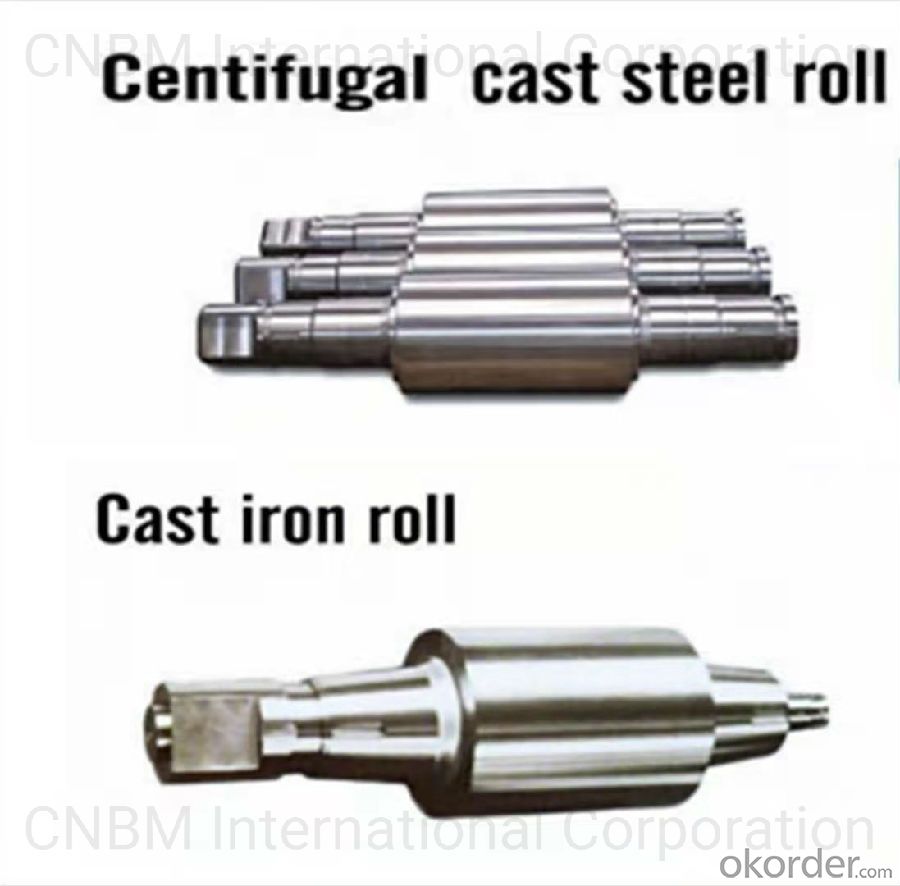
Workshop
Workshop is the core of our company and undertakes all of scientific research work. The company specially produces and supplies all kinds of roll used for hot strip mill, cold strip mill, plate & heavy plate mill, large-sized section mill, universal mill etc.

Products & Specification
| Mill | Application | Material | Product Specification | ||
| Hot Strip Mill | Large-sized vertical roll | Special alloy cast roll, Adamite | All Sizes | ||
| Small-sized vertical roll | Adamite, HiCr iron | ||||
| Roughing work roll | Special alloy cast steel, Adamite, HiCr steel, Semi-HSS, HiCr iron | ||||
| Finish rolling | Early stand work roll | HiCr iron, HSS | |||
| Later stand work roll | ICDP, HSS | ||||
| Finishing back-up roll | Duplex cast steel | D≤¢2000,W≤80t | |||
| Alloy forged steel | D≤¢2000,W≤75t | ||||
| Temper rolling | Work roll | HiCr iron | All Sizes | ||
| Alloy forged steel | |||||
| Back-up roll | ICDP | ||||
| Duplex cast steel | D≤¢2000, W≤80t | ||||
| Alloy forged steel | D≤¢2000, W≤75t | ||||
| Mill | Application | Material | Product specification |
Cold strip mill & Single stand cold mill | Work roll | Alloy forged steel | All Sizes |
| Intermediate roll | Alloy forged steel | ||
| Temper roll | Alloy forged steel | ||
| Back-up roll | Duplex cast steel | D≤¢2000,W≤80t | |
| Alloy forged steel | D≤¢2000,W≤75t | ||
Largesized universal structural mill | Break-down roll | Special alloy cast steel, alloy nodular iron | All Sizes |
| Horizontal collar | High carbon adamite (duplex) | ||
| Vertical collar | High carbon adamite, HiCr iron | ||
| Edger roll Edger roll | High carbon adamite | ||
| Shaft | Alloy forged steel |
| Mill | Application | Marterial | Product Specification | |
| CSP | Vertical Roll | Adamite, Special alloy cast steel, HiCr iron | All Sizes | |
| Roughing work roll | Semi-HSS, HiCr Steel | |||
| Finish rolling | Early stand | HiCr iron, HSS | ||
| Later stand | ICDP, HSS | |||
| Roughing & Finishing back-up roll | Duplex cast steel | D≤¢2000,W≤80t | ||
| Alloy forged steel | D≤¢2000,W≤75t | |||
| Steckel Mill | Vertical roll | Adamite, Special alloy cast steel | All Sizes | |
| Roughing work roll | ICDP, HiCr iron | |||
| Finishing work roll | HiCr iron, ICDP | |||
| Back-up roll | Duplex cast steel | D≤¢2000,W≤80t | ||
| Alloy forged steel | D≤¢2000,W≤75t | |||
| Plate & Heavy plate mill | Rough rolling | 2-hi work roll | Special alloy cast steel, Tool steel | All Sizes |
| 4-hi work roll | HiCr iron, ICDP | |||
| Finishing work roll | HiCr iron, ICDP | |||
| Single stand work roll | HiCr iron, ICDP | |||
| Back-up roll | Duplex cast steel | D≤¢2000,W≤80t | ||
| Alloy forged steel | D≤¢2000,W≤75t | |||
Quality Control
The company has the most advanced experimental and testing equipments in global mill roll industry, including direct-reading spectrometer, spectrum analyzer , X-ray fluorescence analyzer, scanning electronic microscope, energy disperse spectroscopy, X-ray diffractometer, image analyzer, high/low temperature metallographic microscope, X-ray stress meter, brittleness temperature tester, thermal analogue machine, dilatometer, macro and micro hardness tester, OMNISCAM-1X automatic flaw detection, USN60 ultrasonic flaw detector, magnetic powder and non-destructive flaw detection etc,. The advanced inspection equipments and experimental methods provide guarantee for quality control and experiment on material, usability test and performance.
The factories of CNBM invested 2.3 billion RMB for large-scale
CNBM international Corporation has completed equipment and technology upgrade transformation, which was concentrated on three projects, production line of centrifugal casting rolls for hot strip and plate mill, forged roll for cold/hot strip mill, national class technology center and roll material lab. Through upgrade transformation, the following targets have been achideved:
(1)It becomes the world's biggest specialized mill roll maker with the largest production scale, the most complete specifications of products and the most extensive coverage of various rolls used on rolling mill.
(2) The technology of equipments has reached international leading level.
(3) "Mechanization, automation, intellectualization, digitization" of equipments obviously improve the quality control ability.
(4) New types of research instruments improve the R&D capacity of products.
Customers Visit
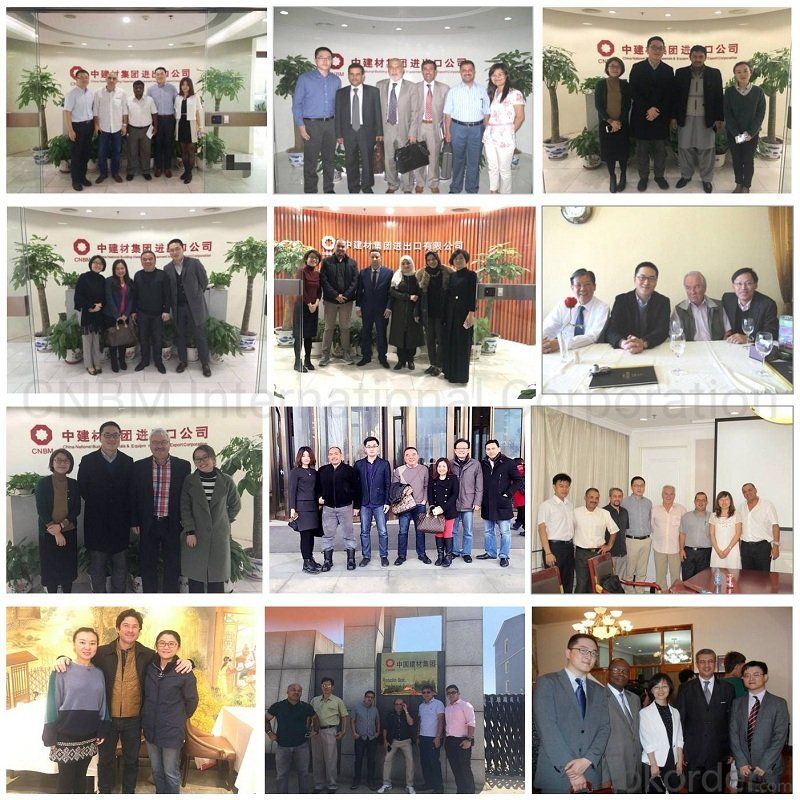
FAQ
Q:Are you a trading company or manufacturer?
A:CNBM is a large-scale central governmental industrial group with its own manufacturing sector, research and development sector, trading sector and logistics sector.
Q:I have some special requirement about specifications.
A:We have a well-rounded product range, which endows us with the capability of applying many special specifications. Please feel free to contact us with yours.
Q:Do you accept OEM service?
A:Yes, we do.
Q:What is your delivery time?
A:It depends on the size/complexity of your order and our own production schedule. Usually we provide a faster delivery than the industry's average.
Q:What is the payment term?
A:Our payment terms are negotiable.
Q:Can I have my own logo on the product?
A:Sure, we can apply your own logo on the products according to your requirement.
- Q:How is the molten metal poured into the mold in metal casting machinery?
- The molten metal is poured into the mold in metal casting machinery by either manually ladling it into the mold or using automated systems such as robotic arms or tilting mechanisms to pour it directly.
- Q:How does metal casting machinery handle different casting methods such as sand casting, investment casting, and die casting?
- Different casting methods, including sand casting, investment casting, and die casting, can be handled by metal casting machinery. Specific processes and equipment are designed for each method. For sand casting, the machinery typically includes pattern or mold-making equipment used to create the mold cavity. Sand is compacted around the pattern, and molten metal is poured into the mold cavity. Sand mixers, molding machines, and shakeout systems are usually part of the machinery used for sand casting, which aids in removing the castings from the molds. Investment casting, also known as lost-wax casting, involves creating a wax pattern of the desired shape. This pattern is then coated with a ceramic shell, which hardens to form a hollow ceramic mold. The wax is melted out, and metal is poured into the mold. Wax injection machines, autoclaves or burnout ovens, and induction or vacuum casting equipment are typically used in metal casting machinery for investment casting. Die casting is a process that injects molten metal into a reusable steel mold, or die. High-pressure casting machines are used to apply force and inject the molten metal into the die cavity. Cooling systems are included in die casting machinery to solidify the metal quickly. Trimming and finishing machinery is often used to achieve the desired final shape and remove excess material from the casting. In conclusion, metal casting machinery is designed for specific casting methods such as sand casting, investment casting, and die casting. Each method requires unique equipment and processes to ensure the quality and shape of the final casting.
- Q:How are the cores created and inserted in the mold using metal casting machinery?
- In metal casting machinery, the cores are created and inserted in the mold through a series of processes. Firstly, the core material is selected based on the specific requirements of the casting. Common core materials include sand, ceramic, and metal. To create the core, a core box is used. The core box is a tool made of metal or wood that has a cavity in the shape of the desired core. The core material is then packed into the cavity of the core box. This can be done manually or using automated core-making machines. Once the core is formed inside the core box, it is removed and inspected for any defects or imperfections. Any necessary repairs or adjustments are made at this stage. To insert the core into the mold, the two halves of the mold are separated. The core is placed in the appropriate position within one of the mold halves. In some cases, multiple cores may be used depending on the complexity of the casting. After inserting the core, the two mold halves are brought together, ensuring that the core is properly aligned. The mold is securely closed and clamped to prevent any movement during the casting process. Once the mold is prepared, the molten metal is poured into the mold cavity through a gating system. The metal fills the space between the core and the mold cavity, solidifying around the core to form the desired shape. After the metal has cooled and solidified, the mold is opened, and the casting is removed. The core, which is typically made of a non-dissolvable material, remains inside the casting. The core is then removed through various methods such as mechanical knockout, chemical dissolution, or thermal destruction, depending on the core material used. In summary, the cores are created by packing core material into a core box, which is then removed and inspected for quality. The cores are inserted into the mold halves before closing the mold and pouring the molten metal. After the casting has solidified, the mold is opened, and the cores are removed to reveal the final metal casting.
- Q:How does the cooling system in metal casting machinery work?
- Maintaining the temperature of the casting process and ensuring the quality of the final product heavily relies on the key role played by the cooling system in metal casting machinery. Its main function is to disperse the heat generated during casting. Typically, the cooling system comprises strategically placed channels or passages within the machinery. These channels are responsible for the circulation of cooling fluids, such as water or oil, which absorb the excessive heat produced by the molten metal. The controlled pumping of cooling fluids through the channels allows for the transfer of heat from the hot molten metal to the chilled walls of the channels. This transfer, known as conduction, occurs when heat flows from a higher temperature region to a lower temperature region. To optimize the cooling effect, the channels often feature intricate patterns like fins or ribs, which increase the surface area of contact between the metal and the cooling fluid. This maximizes heat transfer efficiency and accelerates the cooling process. In addition to conduction, the cooling system may utilize other mechanisms like convection and radiation to enhance heat dissipation. Convection involves the rise of heated fluid due to its lower density, creating a continuous flow that aids in carrying away the heat. Radiation, on the other hand, involves the emission of thermal energy in the form of electromagnetic waves. Overall, the cooling system is an essential component of metal casting machinery. It prevents overheating, controls the solidification rate of the metal, and ensures the dimensional accuracy and integrity of the final castings. By effectively managing the generated heat, the cooling system contributes to the production of defect-free and high-quality metal castings.
- Q:How do you enhance the performance and versatility of metal casting machinery with additional tools and devices?
- Enhancing the performance and versatility of metal casting machinery can be achieved through the integration of additional tools and devices. There are several ways to accomplish this: 1. Automation Systems: Incorporating automation systems such as robotics can significantly improve the performance and versatility of metal casting machinery. These systems can streamline the casting process by automating repetitive tasks, resulting in increased efficiency and reduced labor costs. Additionally, robotics can offer greater precision and accuracy, ensuring consistent quality in the castings produced. 2. Advanced Monitoring and Control Systems: Implementing advanced monitoring and control systems can enhance the performance of metal casting machinery. These systems can provide real-time data on various parameters such as temperature, pressure, and flow rate, allowing operators to optimize the casting process and make necessary adjustments. Moreover, such systems can enable predictive maintenance, minimizing machine downtime and enhancing overall productivity. 3. Additive Manufacturing (3D Printing): Integrating additive manufacturing techniques into metal casting machinery can significantly enhance its versatility. By using 3D printing technology, intricate and complex molds and patterns can be produced with ease, allowing for the creation of intricate castings that were previously difficult or impossible to achieve. This opens up new possibilities for design and customization, expanding the range of products that can be manufactured. 4. Improved Cooling Systems: Enhancing the cooling systems of metal casting machinery can improve performance and versatility. By optimizing the cooling process, the solidification of the molten metal can be controlled more effectively, resulting in improved casting quality and reduced defects. Additionally, efficient cooling systems can reduce cycle times, enabling faster production and increased throughput. 5. Material Handling and Manipulation Devices: Utilizing specialized tools and devices for material handling and manipulation can enhance the versatility of metal casting machinery. These devices can facilitate the movement and positioning of molds, cores, and castings, enabling complex casting geometries and reducing the risk of damage during handling. By incorporating such tools, the machinery can accommodate a wider range of casting designs and sizes. In conclusion, enhancing the performance and versatility of metal casting machinery can be achieved through the integration of additional tools and devices such as automation systems, advanced monitoring and control systems, additive manufacturing techniques, improved cooling systems, and material handling devices. These enhancements can lead to increased productivity, improved quality, and expanded capabilities in the metal casting process.
- Q:Can metal casting machinery be used for producing castings with high strength?
- Yes, metal casting machinery can be used for producing castings with high strength. Metal casting is a versatile and widely used process for manufacturing various components and products. By carefully selecting the right type of metal and employing advanced casting techniques, it is possible to produce castings with high strength. The strength of a casting is influenced by several factors such as the choice of metal alloy, the temperature and pressure applied during the casting process, and the post-casting heat treatment. By using high-strength metal alloys such as steel, aluminum, or titanium, it is possible to achieve castings with excellent mechanical properties. Furthermore, modern metal casting machinery offers advanced features and capabilities that enhance the strength of castings. For instance, some casting processes like investment casting and centrifugal casting allow for precise control over the cooling rate, resulting in a refined microstructure and improved strength. Additionally, the use of computer-aided design (CAD) and simulation tools in the casting process helps optimize the design and predict the strength of the final casting. However, it is important to note that while metal casting machinery can contribute to producing castings with high strength, other factors such as the design of the component, the presence of defects, and the quality control processes also play a significant role. Therefore, a comprehensive approach that includes proper material selection, precise process control, and thorough quality assurance is necessary to ensure the production of castings with high strength.
- Q:How is the casting inspected for metallurgical properties in metal casting machinery?
- Casting inspection for metallurgical properties in metal casting machinery primarily involves non-destructive testing techniques such as visual inspection, radiographic testing, ultrasonic testing, and magnetic particle inspection. These methods help identify defects, discontinuities, and potential quality issues in the castings, ensuring they meet the required metallurgical properties.
- Q:How does metal casting machinery handle the removal of excess material from the castings?
- Metal casting machinery handles the removal of excess material from the castings through a process called finishing. Finishing is a crucial step in metal casting as it ensures that the castings meet the desired specifications and have a smooth, refined surface. There are several methods that metal casting machinery employs for the removal of excess material. One common technique is grinding, where specialized grinding machines are used to remove any burrs or unwanted protrusions from the castings. This process ensures that the castings have a clean and precise edge. Another method used is sandblasting, where high-pressure sand or abrasive particles are directed onto the castings. This helps to remove any remaining residual material or surface imperfections, resulting in a smoother and more polished finish. In addition to grinding and sandblasting, metal casting machinery may also employ cutting or milling processes to remove excess material. These techniques involve using cutting tools or machines to precisely trim or shape the castings to the desired dimensions. Furthermore, some advanced metal casting machinery may utilize computer numerical control (CNC) technology to automate the removal of excess material. CNC machines are programmed to follow precise instructions, allowing for accurate and efficient removal of excess material from the castings. Overall, metal casting machinery uses various techniques such as grinding, sandblasting, cutting, milling, and CNC technology to handle the removal of excess material from the castings. These methods ensure that the castings meet the required specifications and have a refined surface finish, resulting in high-quality products for various industries.
- Q:How is the casting inspected for quality control in metal casting machinery?
- The casting is inspected for quality control in metal casting machinery through a variety of methods such as visual inspection, dimensional inspection, non-destructive testing (NDT) techniques like X-ray or ultrasonic testing, and mechanical testing to ensure it meets the desired specifications and standards.
- Q:How is the durability of castings ensured with metal casting machinery?
- The durability of castings is ensured with metal casting machinery through various measures. Firstly, the machinery is designed to produce castings with consistent and uniform properties, ensuring their strength and durability. Secondly, the machinery is equipped with advanced technologies such as precise temperature control, which helps in achieving optimal casting conditions and avoids defects that could compromise durability. Additionally, the machinery is operated by skilled technicians who closely monitor the casting process, ensuring that any issues or deviations are promptly addressed. Finally, quality control measures are implemented throughout the production process, including inspections and testing, to identify and rectify any potential weaknesses or flaws in the castings, thereby ensuring their durability.
1. Manufacturer Overview |
|
|---|---|
| Location | |
| Year Established | |
| Annual Output Value | |
| Main Markets | |
| Company Certifications | |
2. Manufacturer Certificates |
|
|---|---|
| a) Certification Name | |
| Range | |
| Reference | |
| Validity Period | |
3. Manufacturer Capability |
|
|---|---|
| a)Trade Capacity | |
| Nearest Port | |
| Export Percentage | |
| No.of Employees in Trade Department | |
| Language Spoken: | |
| b)Factory Information | |
| Factory Size: | |
| No. of Production Lines | |
| Contract Manufacturing | |
| Product Price Range | |
Send your message to us
Half-Speed Steel Roll With High Quality and Low Price
- Loading Port:
- Tianjin
- Payment Terms:
- TT OR LC
- Min Order Qty:
- 2 m.t.
- Supply Capability:
- 41000 m.t./month
- Option:
- 650X1780X5540; 650X1780X5540; 680X2080X5920
OKorder Service Pledge
OKorder Financial Service
Similar products
New products
Hot products
Hot Searches
Related keywords
